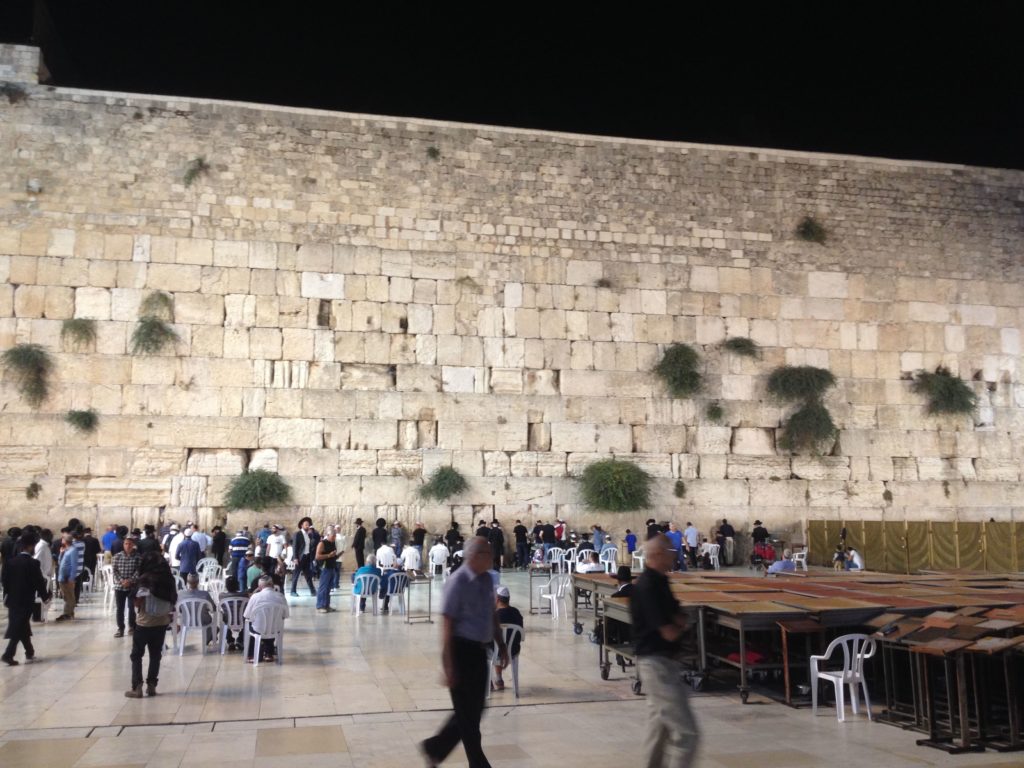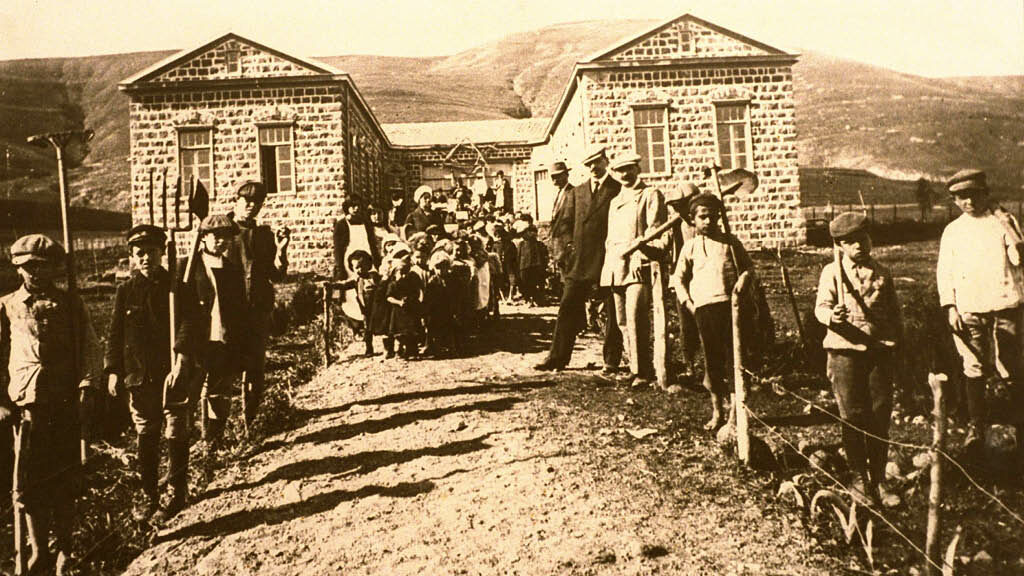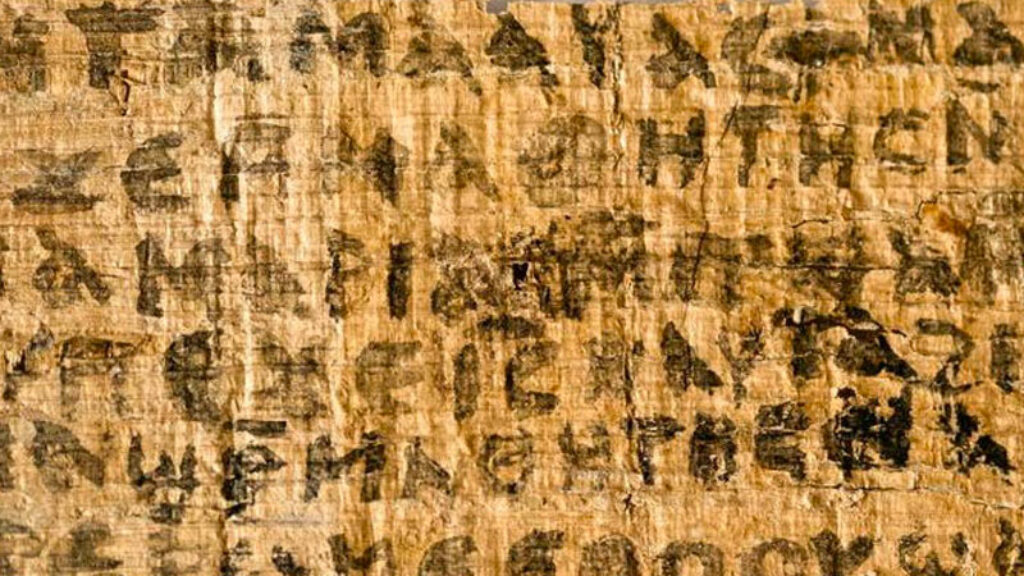Why the Kotel Must Be Governed: A Response
In “Ungoverning the Western Wall,” professors Yuval Jobani and Nahshon Perez propose to privatize the Kotel. They look back with nostalgia at photos of Jews praying at the turn of the 20th century showing men and women praying side by side at the Western Wall, but they ignore the history that brought us to the present arrangements. One doesn’t need to be Edmund Burke to realize that simply undoing them in favor of doctrinaire notions of religion and state, or a wistful individuality, is impracticable.

As early as the 1920s, well before haredi politics became an influence on Israeli society, the increased influx of Jews to the Kotel necessitated the establishment of a mechitza (partition) to divide the sexes. The only objections to this Jewish institutionalization of the Kotel came from the mufti of Jerusalem and his followers. On Yom Kippur of 1928 British police, sympathetic to Arab complaints, forcibly removed the Jewish mechitza. Naturally, this move provoked protests from Jews throughout the world.
The Jewish population of Israel has since grown exponentially. Just think of pictures of the crowded Kotel today, and then try to imagine the “ungoverning” of the Kotel. How would it actually work, and would it lead to fewer conflicts—or more?
The issue goes beyond such (important) pragmatic questions to the very nature of a Jewish and democratic state. While Arabs and even some Jews—whether secular or haredi—might resent it, the State of Israel is the national representative of the Jewish people. It is a Jewish state, not a neutral, libertarian one. Doorways to government office buildings proudly display a mezuza, army food is universally kosher, and Israel virtually goes into a state-sanctioned shutdown on Yom Kippur.
Jobani and Perez imagine an “ungoverned” Western Wall in which “all matters of religious decision making at the site would lie with the individual rather than with the state.” But this is precisely what a Jewish state does not do. Just as soldiers in the IDF have no choice but to eat kosher food, the Jewish state makes decisions as to the nature of its consecrated sites: Jewish decisions. Or more precisely: Jewish and democratic ones.
The proportion of Reform and Conservative Jews in Israel is small. This fact is undeniable, though the question of just how small is disputed. Still more to the point is the fact that Israeli Jews who are neither Orthodox, nor Reform, nor Conservative—most Jews—are happy with the Kotel as it is. As one secular family member told me at his son’s bar mitzvah, he wants a ceremony that is “authentically Jewish.”
As professors Jobani and Perez say of the term minhag hamakom (“local custom”), the concept of “authentically Jewish” may be a highly contested concept. But notwithstanding room for theoretical discussion, the social facts on the ground speak for themselves. Marking 30 years since the founding of Women of the Wall, its members planned a show of strength that was set to bring one thousand women to the Kotel. Ultimately, only 150 or so were reported to have showed up (my daughter counted significantly fewer). For the thousands of haredi high-school girls who showed up in response, the sight must have been somewhat pitiful.
What I see is the workings of a democracy. Aside from (predominantly American) bar mitzvah and bat mitzvah ceremonies, the egalitarian prayer area by Robinson’s arch is largely empty of people, for three reasons. One is that most people coming to pray at the Kotel are Orthodox. The second is that even secular Israeli Jews tend to prefer the Orthodox atmosphere of the traditional Kotel. The third is that people prefer the Kotel they know. The first two reasons are sufficient cause for not meddling with the third. No, this is not neutral. But it is fair and just.
Two years ago, in an article arguing that the now-failed “Kotel compromise just isn’t good enough,” Gabriela Geselowitz wrote: “I want to participate in the shared experience of people who have come to the same spot that immediately reads as a symbol of our history and ongoing connection to God.” Fair enough. But Geselowitz (who was visiting from Brooklyn) wanted to do this on her terms: wearing tefillin, fiancé at her side. The authors of “Ungoverning the Western Wall” argue that the State of Israel should make this possible. But what to do? The great majority of Jews praying at the Kotel have conflicting needs. Given the demographics and the tradition, no state would be likely to dismantle a longstanding, functioning institution in favor of personal expression. We can hardly expect it of our Jewish and democratic one.
Comments
You must log in to comment Log In
Suggested Reading
Comes the Comer
The New American Haggadah boasts a high-profile cast of contributors—Jonathan Safran Foer, Nathan Englander, Nathaniel Deutsch, Jeffrey Goldberg, Rebecca Newberger Goldstein, and Lemony Snicket. But it also features a series of unfortunate translations and commentaries.

A Failure of Reimagination?
We once worried about the faith of young American Jews; now we worry about their politics. It’s part of a long historical development we should resist because Judaism-as-politics isn’t enough.

Lovers (and Haters) of Zion
A new history of Zionism tells the tale through the towering emotions of its proponents and adversaries.

The Professor and the Con Man
The saga of the papyrus that became famous as the Gospel of Jesus’s Wife began with an email sent to Karen King, a distinguished Harvard professor, in July 2010. The subject line read, simply, “Coptic gnostic gospels in my collection.”
Jonathan Gerard
This response does not convince. The kotel is not a shul; it is an archaeological site. It is part of the retaining wall of the ancient Temple. We do not know Moses' burial site because Jews are not to make places into shrines. We are to worship God, not things. Turning the kotel into an Orthodox shul is a form of idolatry. After the destruction of the Temple in 586 BCE and in Babylonian captivity, Jews learned that God was "portable" and did not live exclusively in a Temple. Leaving notes to God in kotel crevices shows a failure to recognize this traditional insight of Judaism. One can find God everywhere.
The fact that the majority of Israelis believe that the Orthodox rabbinate has legitimate authority in this matter (and in other religious matters) does not make it right. Judaism itself is an illustration that being in the majority is not an argument for truth or for ethics. (My correct email is [email protected])
Jerome M. Marcus
I agree emphatically with Rabbi Pfeffer's conclusion but I fear he is being too kind to those he is answering. The short answers to their arguments are:
1. You cannot have Orthodox congregational prayer, at the Kotel or anywhere else, without governance. Saying it should be up to each individual person is the same as saying that organized Orthodox prayer -- and only Orthodox prayer -- should be forbidden. Conservative, Orthodox and Reconstructionist Jews can pray as a congregation - - they can say kaddish, they can repeat the Amidah, they can have a Torah service -- without a mechitzah. But Orthodox Jews can't. To be able to put up a mechitzah and make sure someone who doesn't like it doesn't tear it down, you need governance. That much we should have learned from the Mufti and from the British.
This fact explains the significance -- really, the lack of significance -- of the photo that accompanied the article Rabbi Pfeffer is answering. Yes, in the 19th century Jews stood at the Kotel with men and women near each other and without a mechitzah. But that's because they were not davening, and were not allowed to daven, b'tzibbur -- in a congregation. Not a one of the clearly Orthodox Jews in that picture would ever have thought for a moment of davning b'tzibbur in a mixture of men and women. Even Rabbi Pferrer's interlocutors will, if they are knowledgeable Jews, admit that. Therefore the picture proves only one thing: that before 1967 Jews were not assured of the right to pray as a congregation at the Kotel.
2. The second point that disposes of this argument is that (a) non-Orthodox Jews already have a place, at the Kotel, to pray and (and Rabbi Pfeffer says this, though too gently) it's almost always completely empty. It's along the same wall --that is, the same kotel -- as the Kotel. There just isn't ever anybody there. If Conservative and Reform Jews really wanted to pray at the Kotel, according to their minhag, they could do something very simple: they can pray at the Kotel according to their minhag. They are entirely free to do it. They have a space just for them at which they can do it. They just don't. And when they do show up, in small numbers, on Rosh Chodesh, they're clearly more interested in disrupting Orthodox prayer than in conducting their own prayer 50 feet away, along the same wall.
These days crazy Israel, with its raucous Knesset, has more rational political debate than the US. Thank God that, also on this issue of public religious spaces, the Israelis are more reasonable than their American relatives.
Liz O
See my comment right below yours re: Reform, Conservative, Reconstructionist Jews and WOW praying at Robinson’s arch. In brief, the Haredim could pray there, erect a mechitza, and be so far away from the main part of the Kotel that they couldn’t POSSIBLY hear or be distracted by women praying — alongside, or not, with men — on the Kotel plaza. It’s all part of the same wall, right? Yeah, that might just happen when h—l freezes over. This is about NOTHING but the fact that the Haredim believe that their expression of Jewish practice is the only authentic one and they insist that IT, and it alone, be what is seen by the world when they see pix of the Kotel. As to your first point, the Kotel agreement worked out after years of negotiation, and agreed to by the Haredim, left the Kotel plaza — and its mechitzah — UNTOUCHED! No problem with Orthodox prayer continuing just as it is now. What it did was provide a space for more liberal prayer styles NEXT TO the plaza. It would have raised the Robinson’s Arch area to the same height as the current Kotel plaza and made THAT (the more liberal style of prayer) ALSO (not instead of) visible. And therein lies the problem and the reason for the Haredim reneging on the agreement to which they had agreed. It hasn’t got ANYTHING to do with preserving Orthodox prayer. It has to do with continuing to marginalize and hide from sight ANY Jewish prayer style but their own! As I said: Dai zeh (enough is enough already)!!!
Jerome Marcus
In response to Liz O:
Why don't the Orthodox pray at Robinson's Arch? And why do the Orthodox behave badly when WOW show up in the Ezras Nashim at the Kotel? Two Jewish principles -- one halachic, and one unique to the Reform movement, answer the question.
Perhaps the most curious aspect of the non-Orthodox passion about davening at the Kotel is that, at least for Reform, the Temple itself is unimportant. Reform Judaism long ago abandoned the yearning for reconstruction of the Temple: that's why Reform shuls are called "Temples" themselves -- they are the new Temples, fulfilling their missions around the world. That's why the Reform had such an ambivalent, and at times outright hostile, view of the return to Zion and the State of Israel. It's why Reform completely abandoned prayer meant to remind us of the animal sacrifice that had been carried out at the Temple, and why they excised from their siddur any reference to the return of those rituals; that's' why the Reform siddur has no mussaf service. (Conservative Judaism kept the service but changed the words so that they recall the sacrifices but don't say anything about reinstating them.)
Many Orthodox rabbis make it a habit to end every sermon with a reference to "the rebuilt Beis HaMikdash, may it be built speadily and in our days." No Reform rabbi would ever say such a thing.
Given all of the above, why in the world would Reform Jews even care about davening about the Kotel? it's nothing to them but a historical site. It has no future significance. The particular location along the Kotel at which the current plaza is located is thought to be as close as we can get to the Holy of Holies, the awesome sanctuary into which the Kohen Gadol, or High Priest, entered alone once a year on Yom Kippur. But if you refuse to pray for the reconstruction of that room, why the need to pray so close to it? It's just a historical site.
I'm afraid the answer is that the Reform are pushing to move the Orthodox down to Robinson's Arch not because they really want to be opposite the Kadosh Ha Kadoshim but because they want to displace the Orthodox. They should try doing that by preaching the ideas they hold dear, and spreading them, not by ejecting the Orthodox from the place where they've been davening since long before Reform Judaism was invented in the 19th century.
Which brings me to the other principle relevant here, a halachic one: hamotsi m'chavero alav haraya -- the burden is on the one who would take something out of the possession of his fellow. The Haskalah, and is products Reform and the Conservative moment, are all inventions of the last two centuries. Before that the only kind of Judaism there was was Orthodox Judaism. By that I don't mean to claim that all Jews abided by the principles or fulfilled the mandates of Orthodox Judaism. I mean only that there was no such thing as a Non-Orthodox movement, an organized group of people and ideas. That's why, even in 1928, when the non-Jewish authorities took away the Mechitz at the Kotel, it was understood as an attack on Judaism, and Jewish observance, simpliciter. And its why there were no Jews cheering the removal of the Mechitza.
Come now (and by "now" I mean recently, in the relative sense of by comparison to all of Jewish history) a group of Jews and ask to pray and learn without a Mechitza and without distinction between adult men and adult women. By all means the people who wish to pray this way and to learn this way and to live this way should have the right to do so. But they cannot ask to displace the Jews who are doing it the old way. They should not disrupt those people, or try to set up a Conservative or Reform shul in the midst of an Orthodox shul. (And they should not be surprised or pretend to be wounded when the Orthodox who who daven daily in their Orthodox shul at the Kotel get angry when people come into the middle of their shul and set up another shul with different minhagim -- any more than I should have the right to walk into Temple Emanuel on Fifth Avenue and put up a Mechitza and daven there peacefully with ten men.)
Instead, let these adherents to new ideas respectfully find, and let the Government of Israel (the Nation State of the Jewish people) respectfully find for them, a place where these people can worship as they choose.
They have one at Robinson's Arch. Dai la'hem.
Liz O.
I would respectfully ask just WHO is creating a disturbance at the Western Wall when Women of the Wall come to pray? If the haredim did not yell at, whistle at, throw dirty diapers at, spit on, curse at, try to yank sacred Torahs out of the arms of the women, literally physically attack them and, at times, throw them to the ground resulting in injuries, etc. etc. the prayers of these women would go largely unnoticed! A while back some of the haredim (literally those who "tremble at the word of God" because they are so committed to living a Godly life) suggested that the women should be satisfied with praying at Robinson's Arch (conveniently hidden from public view) since, after all, "It is just as much a part of the Wall as is the part viewable from the plaza." I have a novel idea. Since it is so important for the haredim to be "separated" and not "distracted" by the Women of the Wall, how about THEY pray at Robinson's Arch for a while and let the WOW use the viewable main portion of the Wall? After all, the haredim have had exclusive access to this portion for decades. Isn't it time to share? After all, it's all part of the same Wall isn't it? Right!!! It simply baffles me that people who profess to be so concerned with following God's teachings and words seem to feel that God would endorse such horrific behavior directed at Jewish women -- or ANY Jews -- or, for that matter, at anyone Jewish or not -- who wanted nothing more than to pray to their God in a dignified way that is authentic to them. I have prayed with WOW on two occasions (while visiting Israel). Both times there were upwards of 75 women who participated while the men prayed on their side of the mechitzah and those women who chose to prayed on the women's side of the mechitzah (closer to the Wall and unbothered by the WOW who maintained a distance precisely so as to make it easy for these women to pray according to THEIR minhag) and, frankly, no one would have even noticed the presence of the WOW. It is only when those haredim who seem to think that they get to define what is "authentic" Jewish practice and what is not -- and, more importantly to impose THEIR opinions on everyone else! -- carry on like raving lunatics that there is ANY disruption of ANYONE'S praying in a meaningful way at the Wall. So, once again, WHO is actually causing a disturbance when WOW come -- ONCE A MONTH FOR ABOUT HALF AN HOUR -- to pray at the Wall? D'ai zeh d'ai!!!
Sheldon Schreter
Rabbi Pfeffer's rational-sounding comment elides one basic point: the haredim do not OWN the Kotel, nor do they own Judaism, yet that is the arrangement in which they demand the rest of the Jewish world (whose very Jewishness they belittle and dispute) acquiesce. He is right that the Jobani-Perez proposal would lead to chaos, primarily because of haredi use of force against any deviation from their control of the site. The only solution is to provide a separate venue for non-Orthodox Jewish rites, as the previous, painfully worked-out agreement provided for, until haredi politicians sabotaged this infringement on their monopoly-by-force and pressured Netanyahu into backing out of it. Like any other component of the Jewish world, haredim have the absolute right to worship as they please, but NOT to impose that on other Jews with different customs.
Velvl Sokoloff
This is a symptom of a very Israeli definition of democracy which is about majority rule and does not take into account the legitimacy of minority needs. To maintain their hold on defining Judaism, Haredim posture themselves as the owners and 'true users' of the Kotel. To maintain their hold on the state, Jewish people posture themselves as the owners and 'true users' of the Holy Land. Secular, Egalitarian, Reform, and other Jewish people will be unable to successfully reclaim our space at the Kotel while we support uncritically majoritarian, exclusionary, and anti-democratic practices by the 'Jewish' state (which defines itself using a majoritarian definition of Judaism that has rarely defined Jewish places, even neighbourhoods or cities, in the past).
Martin Berman-Gorvine
You know, I think of that famous photo of the Israeli soldiers standing in awe by the Kotel during the Six-Day War. Funny, but I don't remember seeing any haredim in that picture. They wouldn't risk their lives to return the Kotel to the domain of the Jewish people, so why should their rules be imposed on the site and on all other Jews?